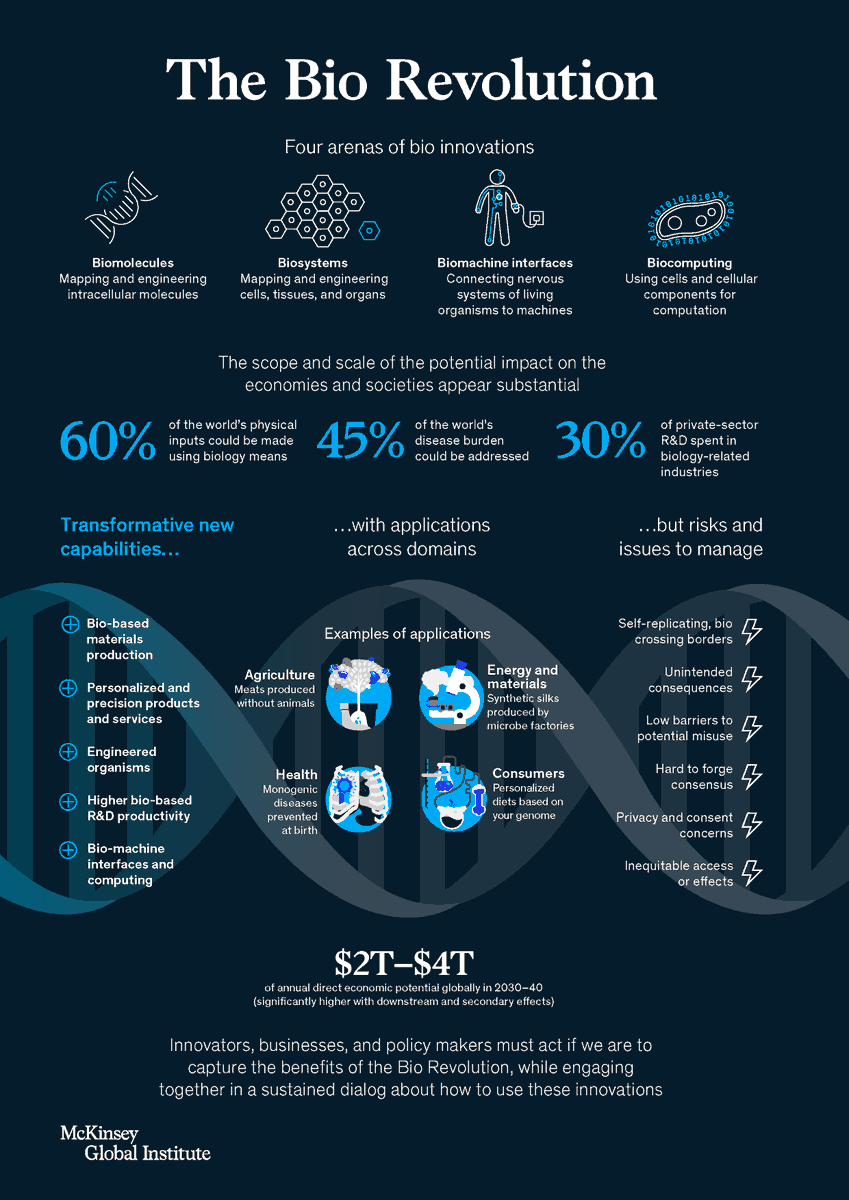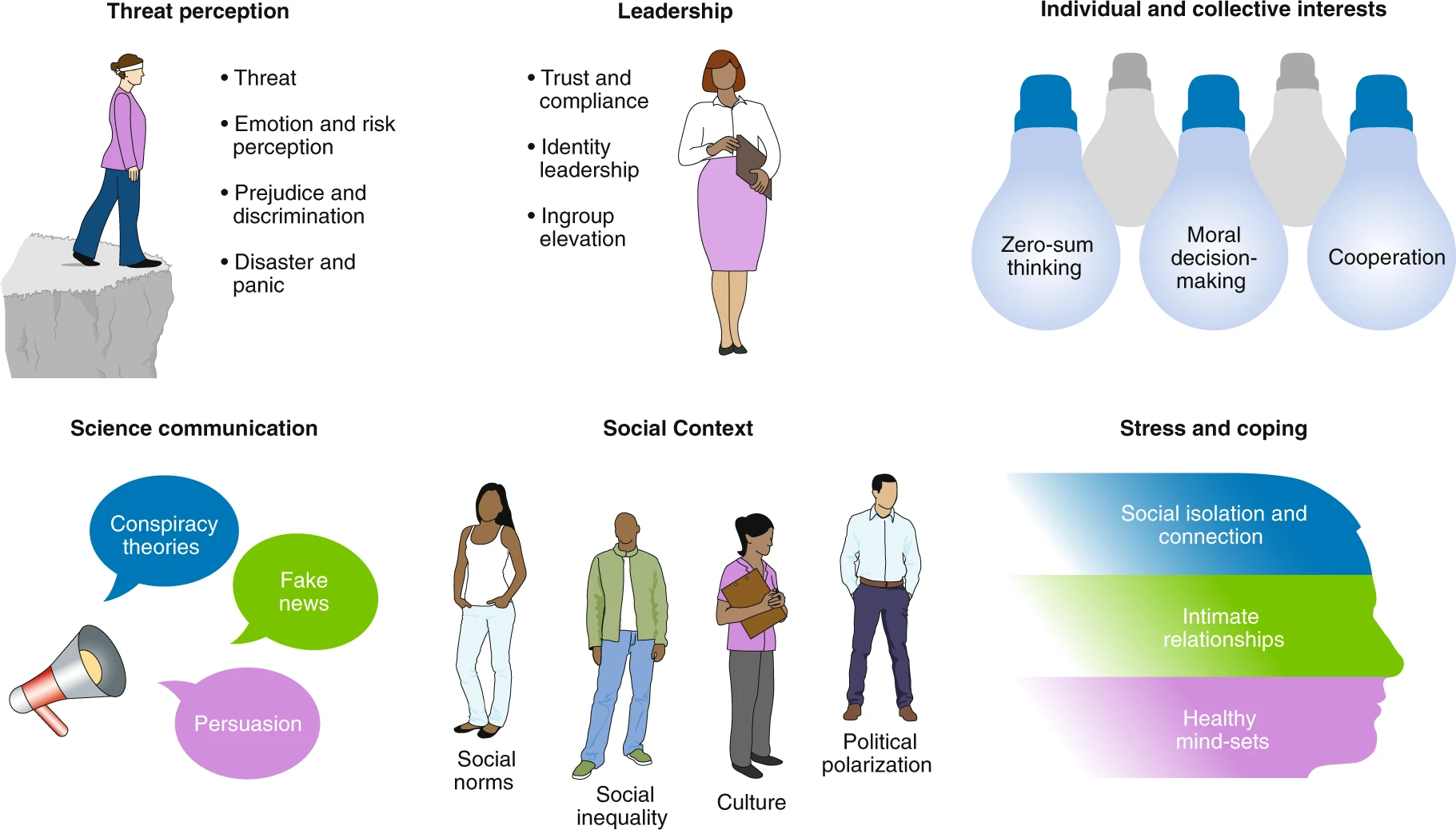McKinsey Global Institute is well known by their excellent papers and analysis. Forget consultancy for a while, if you are interested in the disruptive knowledge, go to MGI. Recently they have released an excellent report on the Bio Revolution. This is a timely contribution for an issue that those that read this blog already know: we are within a huge change on how life has been considered. CRISPR technology, among others, are changing quickly the landscape.
The potential scope and scale of the (direct and indirect) impact of biological innovations appear very substantial. As much as 60 percent of the physical inputs to the global economy could be produced biologically. Around one-third of these inputs are biological materials (such as wood). The remaining two-thirds are not biological materials, but could, in principle, be produced using innovative biological processes (for instance, bioplastics).
A pipeline of about 400 use cases, almost all scientifically feasible today, is already visible. These applications alone could have direct economic impact of up to $4 trillion a year over the next ten to 20 years. More than half of this direct impact could be outside human health in domains such as agriculture and food, consumer products and services, and materials and energy production. Taking into account potential knock-on effects, new applications yet to emerge, and additional scientific breakthroughs, the full potential could be far larger.A must read.





